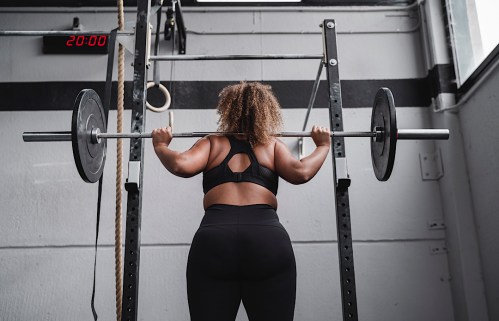If you’re a newbie to lifting, the weight room can feel like a foreign country whose language you don’t speak, which is to say confusing and at least a bit intimidating. Understandably, you’re bound to make a few missteps at first, and there are, in fact, a few beginner weight room mistakes trainers see time and again that you should avoid. Doing so will help you avoid risk while building confidence (and muscle!).
Experts in This Article
NASM-certified personal trainer
“Starting a new fitness routine takes time, and if you don’t give yourself time to learn how to lift and grow, you might get discouraged,” says personal trainer Matthew Scarfo, CPT. “Allow yourself to be a beginner and enjoy the process.” One thing that will make your weight-lifting journey more enjoyable is avoiding the common missteps below.
Here are a few beginner weight room mistakes most people make, plus how to avoid them
1. Executing lifts with improper form
Paying attention to form keeps you safe, prevents injury, and helps you get into the swing of things faster. It can also help prevent muscle imbalances. “It’s not unusual for people to have one side of their body be stronger than the other,” Scarfo says. “For example, some people who do heavy squats will shift their weight to their stronger leg.”
Focusing on doing fewer reps with proper technique initially can help you nail the correct movement patterns before adding load, and one way to ensure that you’re building strength evenly on both sides of your body—so one side isn’t compensating for the other—is by doing what’s called unilateral (or single-sided) exercises.
2. Lifting too heavy too soon
This is right up there with improper form. “One of the most significant concerns for people entering the weight room for the first time is getting injured by lifting too much weight,” Scarfo says.
A general rule of thumb is to lift loads that feel manageable, but challenging, for you the muscle by the last two to three reps of a set. Once that much weight feels easy for you, you go up incrementally so that you’re progressively loading exercises little by little.
3. Only sticking with weight machines
“Many people start lifting by using machines, because most machines have diagrams on how to use them, taking out the anxiety of trying to move a barbell or dumbbell effectively,” Scarfo says.
The instability of free weights is a good thing though, as it’ll help you build muscle more efficiently, and they also don’t limit your range of motion the way machines do, meaning you can also increase your mobility.
If you’re not sure where to start, consider signing up for a few personal training sessions with a CPT at your gym.
4. Not having a workout plan
“When you start lifting, you have to have a plan to guarantee you’ll get stronger,” Scarfo explains. Most weight lifting plans employ progressive overload to help you reach your strength goals, which is why they’re so effective.
If you know you’re strength goals are general—as in build muscle, increase your maximum strength—then you can use any number of pre-programmed fitness apps to guide you. Future is a favorite at Well+Good, and Lift Valut, where Scarfo serves as the resident training expert, offers free, program spreadsheets that are mobile-friendly so you can pull them up on your phone. For more specific goals, you should work one-on-one with a personal trainer to create a customized workout plan.
5. Not cleaning up after yourself
Each gym has its own set of unwritten rules, but there are a few that apply everywhere. “Wiping down your machine or bench is good hygiene; similarly, always re-rack your weights after you use them,” Scarfo says. If you do these two things every time you lift, you’ll be in good hands.
Oh hi! You look like someone who loves free workouts, discounts for cutting-edge wellness brands, and exclusive Well+Good content. Sign up for Well+, our online community of wellness insiders, and unlock your rewards instantly.
Sign Up for Our Daily Newsletter
Get all the latest in wellness, trends, food, fitness, beauty, and more delivered right to your inbox.
Got it, you've been added to our email list.











